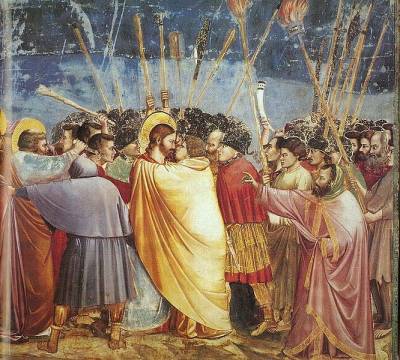|
Giotto
|
|
| Former-Teacher | Date: Tuesday, 06.03.2012, 14:20 | Message # 1 |
 Dean
Group: Admins
Messages: 504
Status: Offline
| What do you know about Giotto?
Where did he come from?
What were the times like?
What is his life story?
How come he became one of the most outstanding Renaissance painters?
What was his main artistic principle?
What did he convey through his paintings?
What are his most famous works?
To what extent was Giotto's art revolutionary?
How do you understand Giotto's art?
How does his art help you understand the Renaissance philosophy?
|
| |
|
|
| Luck | Date: Saturday, 10.03.2012, 18:48 | Message # 2 |
|
Union organizer
Group: Friends
Messages: 172
Status: Offline
| First of all it is important to notice that Giotto was painting pictures on the themes connected with the church, holy events, saints. The picture I would like to discuss is Ognissanti Madonna , you can see it here: http://upload.wikimedia.org/wikiped....90.jpg.
This is an altarpiece and it is actually the only panel painted by Giotto that was universally accepted by scholars. This work was painted for one of the churches in Florence. It is a really large picture, you can imagine its size - 325 x 204 cm. And even now the scholars can’t decide whether it was made for the main altar, so that preachers could see it, or for the choir screen, so that people who came to the church could enjoy looking at the picture. The images depicted in the picture look quite different from those ones that we are used to seeing in catholic churches. Probably this is one of the features that distinguishes works by Giotto from all the others.
|
| |
|
|
| Teacher | Date: Sunday, 11.03.2012, 15:25 | Message # 3 |
 Head teacher
Group: Admins
Messages: 375
Status: Offline
| Giotto di Bondone (1266/7 – January 8, 1337), better known simply as Giotto, was an Italian painter and architect from Florence in the late Middle Ages. He is generally considered the first in a line of great artists who contributed to the Italian Renaissance.
Giotto's contemporary Giovanni Villani wrote that Giotto was "the most sovereign master of painting in his time, who drew all his figures and their postures according to nature. And he was given a salary by the Comune of Florence in virtue of his talent and excellence."

Giotto. Kiss of Judas (ca. 1305, Arena Chapel, Padua)
The fresco "Kiss of Judas" represents the moment when one of the apostles betrays Christ. Giotto achieves the dramatic effect bringing the faces of two main persons very close together. Jesus Christ’s face remains calm being the only place of peace in the middle of the emotional storm. Judas’s face looks demoniac. Giotto drew this fresco using the technique of fresco-secco.
Fresco-secco (or a secco or fresco finto) is a fresco painting technique in which pigments ground in water are tempered using egg yolk or whole egg mixed with water which are applied to plaster that has been moistened (using this temper) to simulate fresh plaster. No white is used (as in watercolour painting). In true fresco (buon fresco), the plaster is still fresh and has not dried when the watercolors are introduced. It is also common to use white to lighten colours in fresco.
Because the pigments do not become part of the wall, as in buon fresco, fresco-secco paintings are less durable. The colors may flake off the painting as time goes by, but this technique has the advantages of a longer working time and retouchability.
In Vino Veritas...
|
| |
|
|












